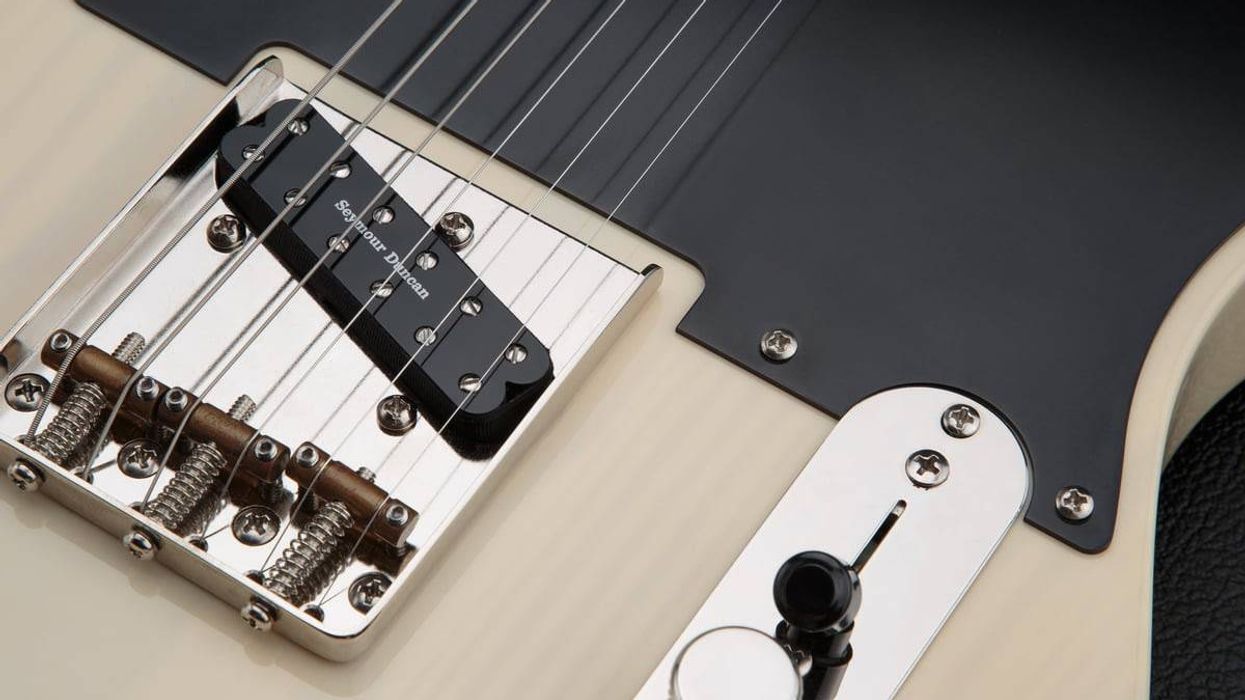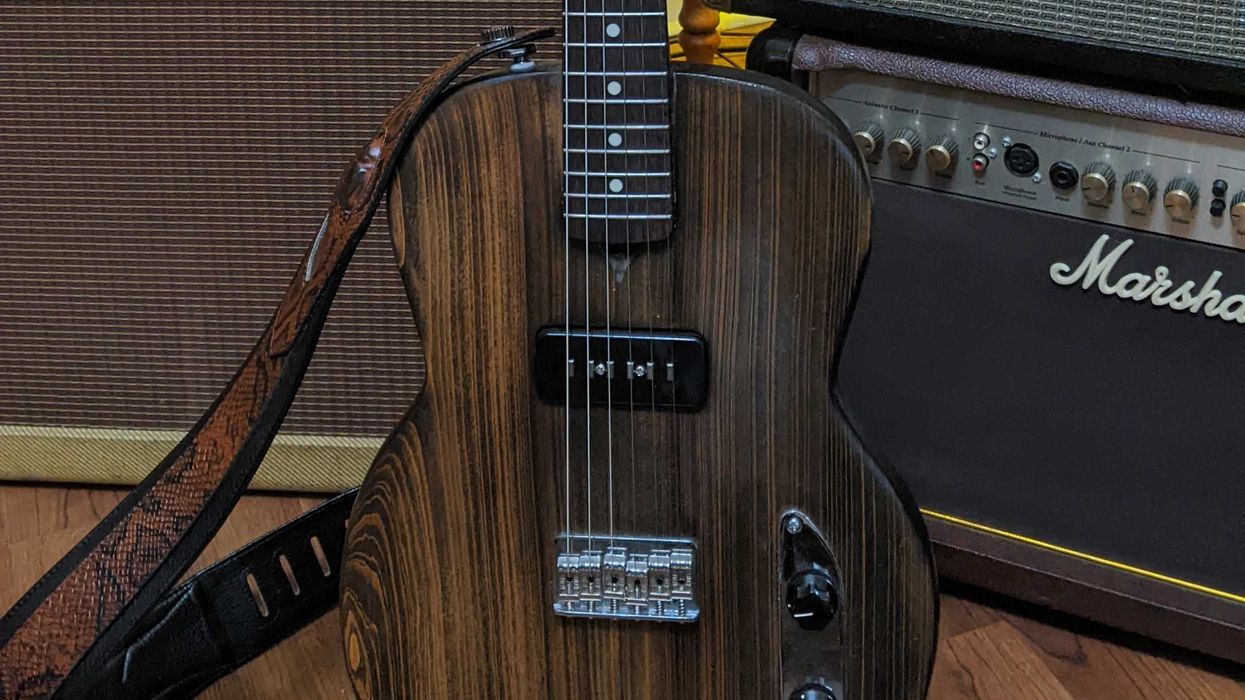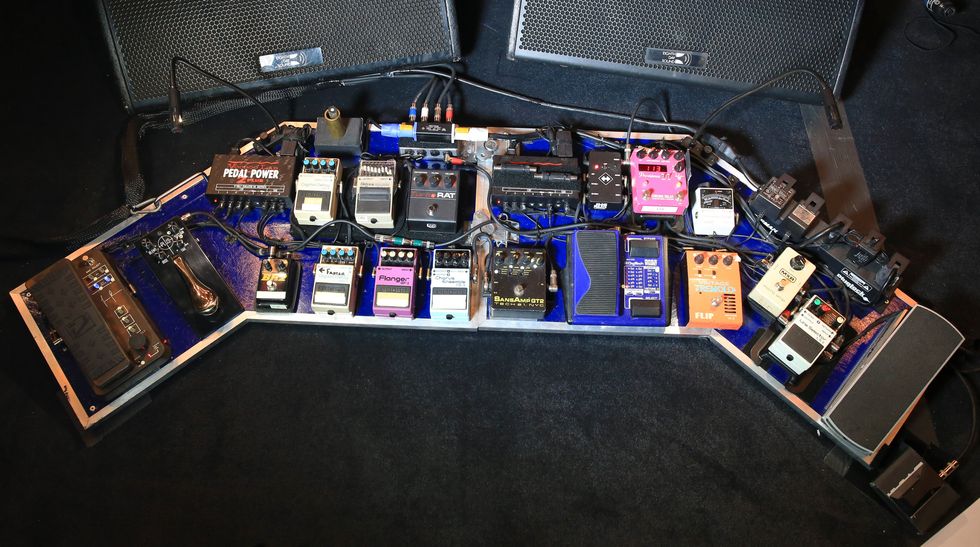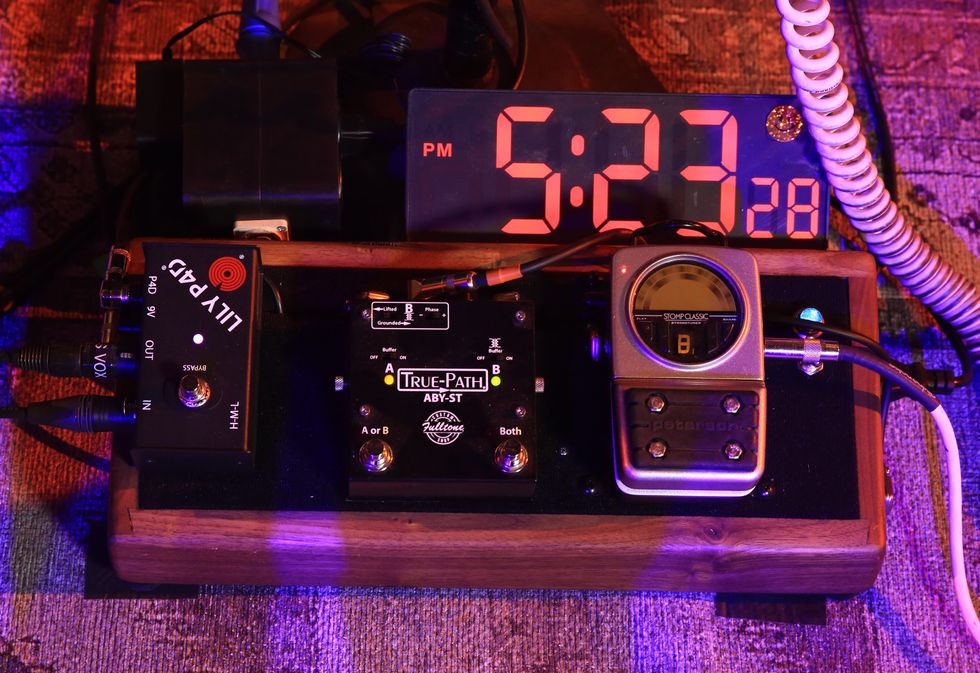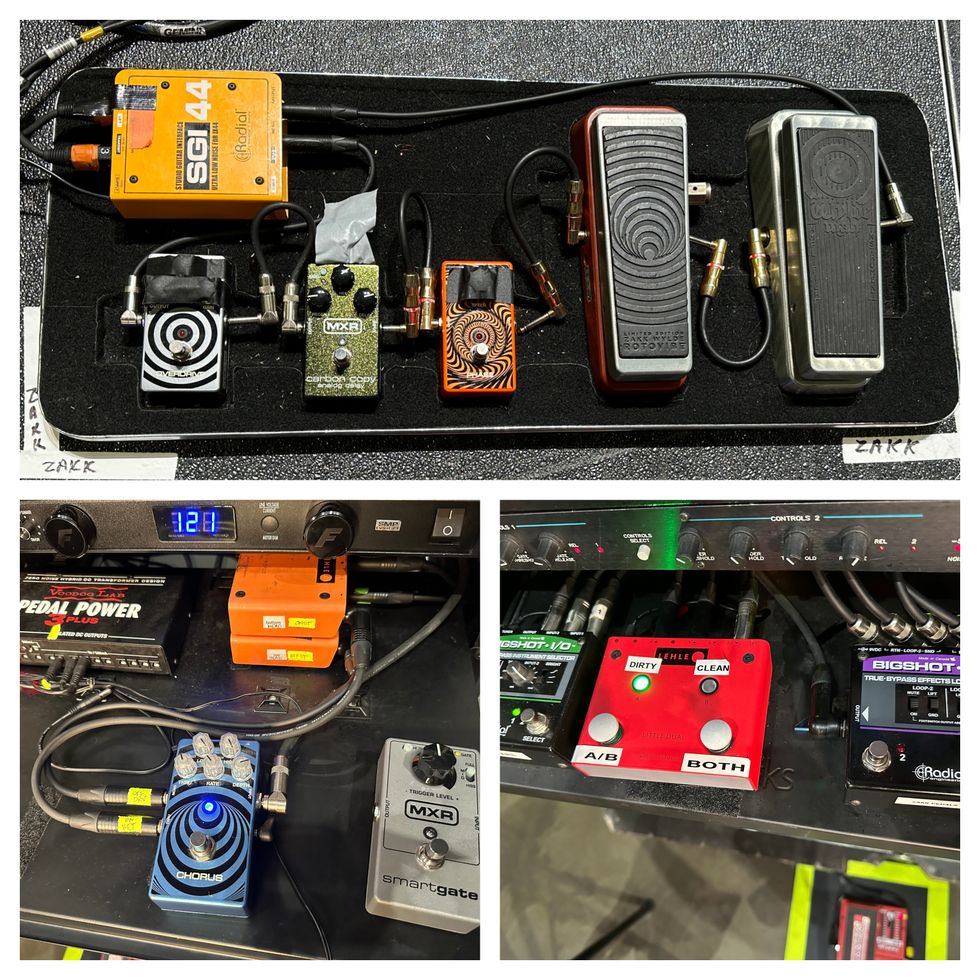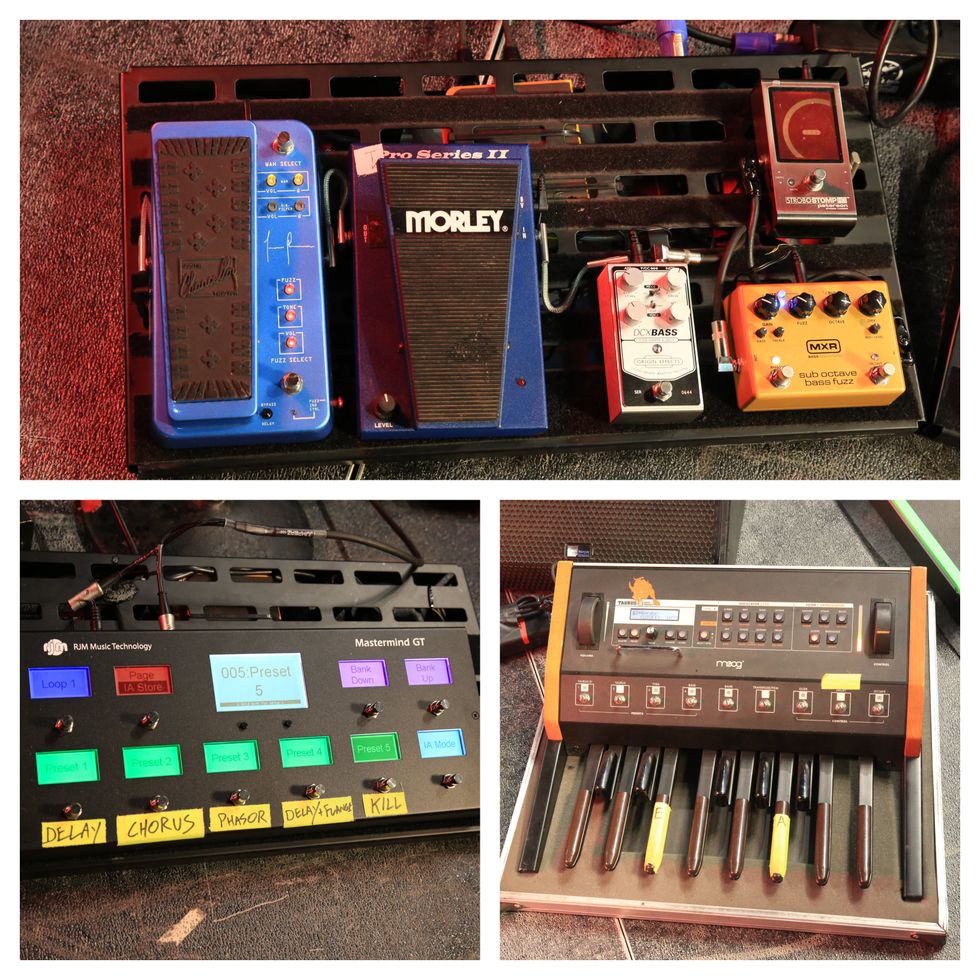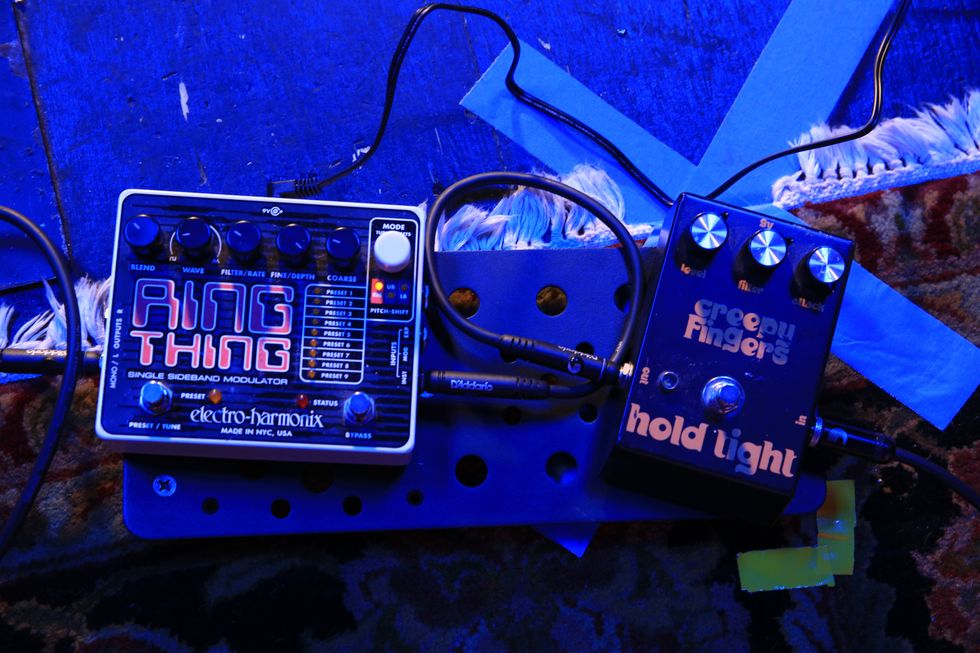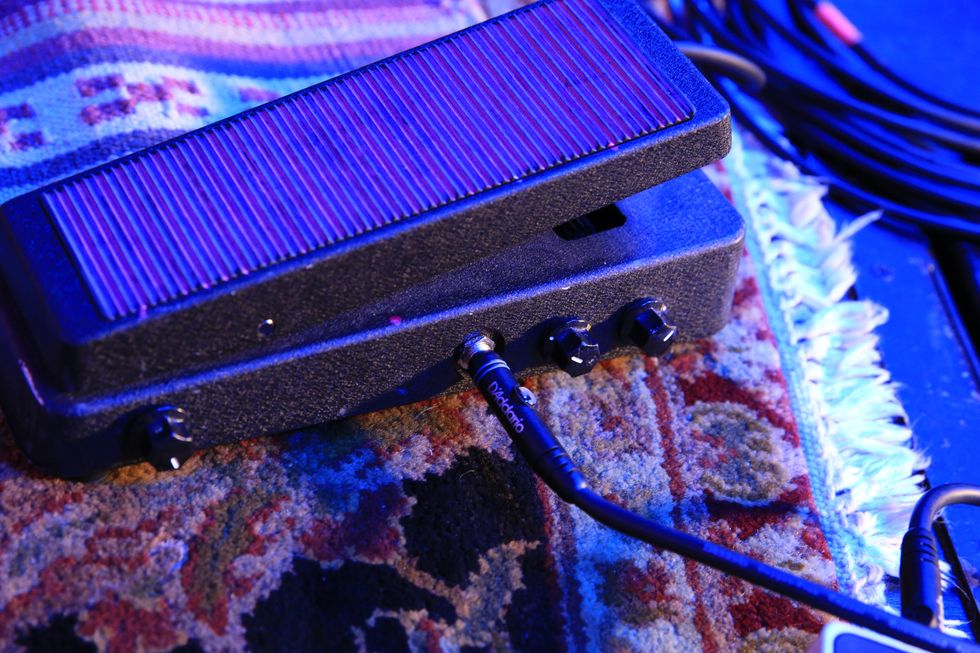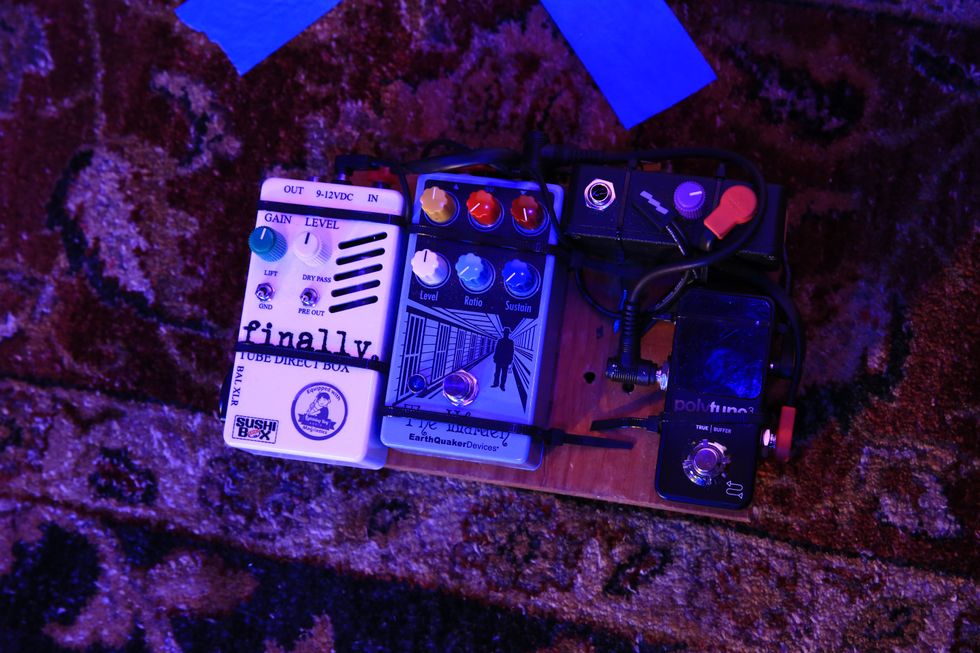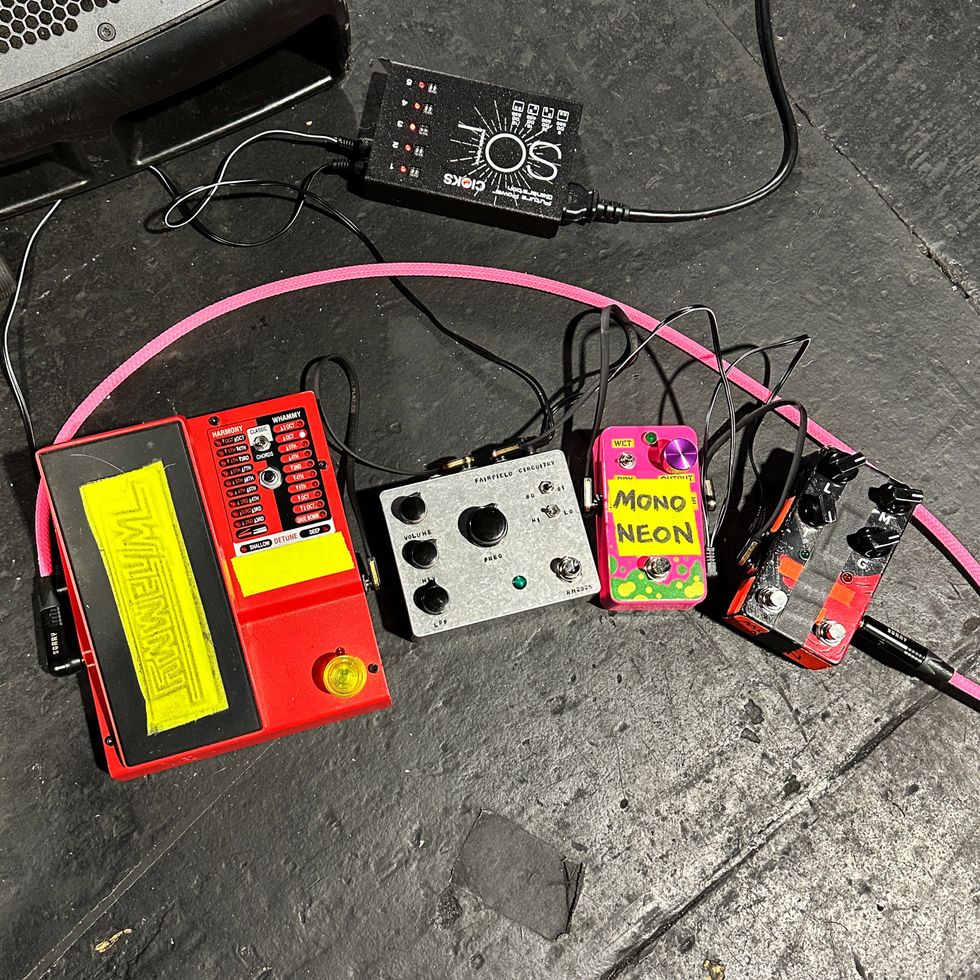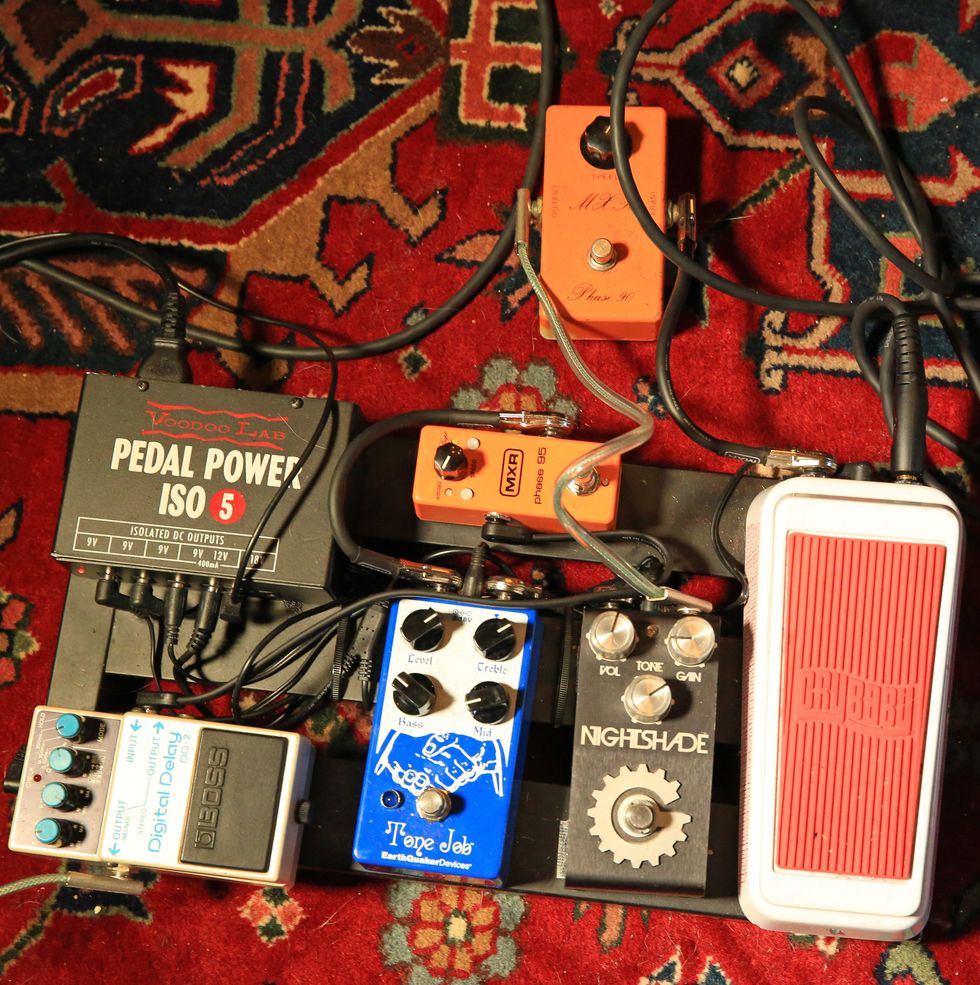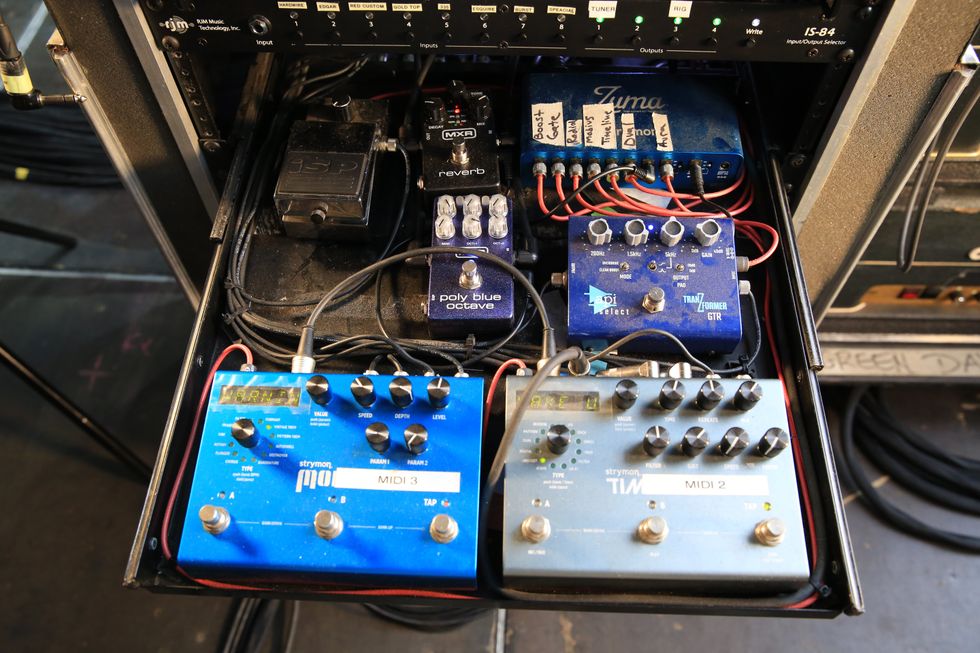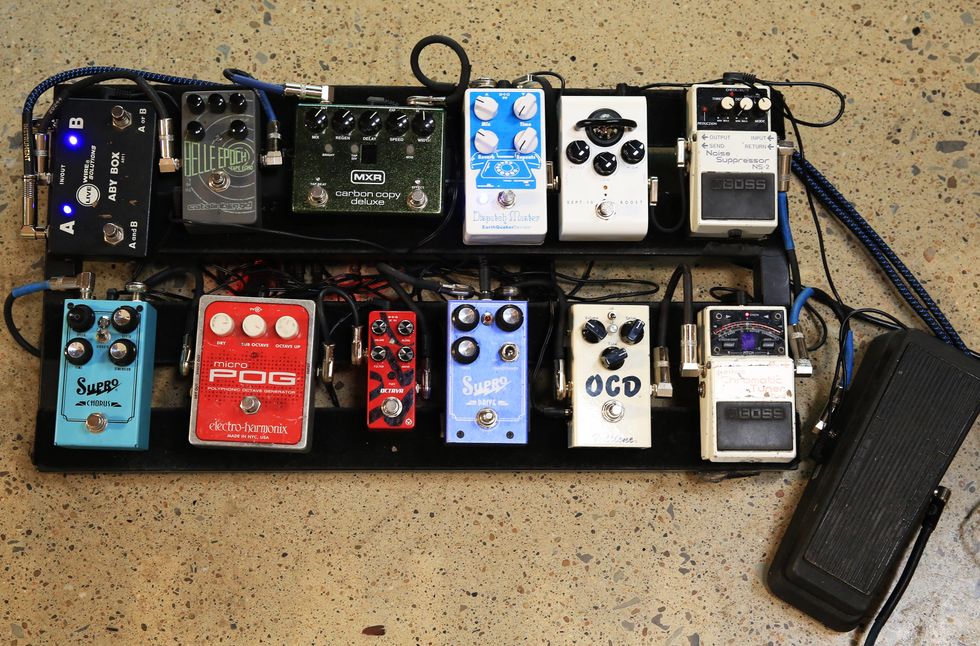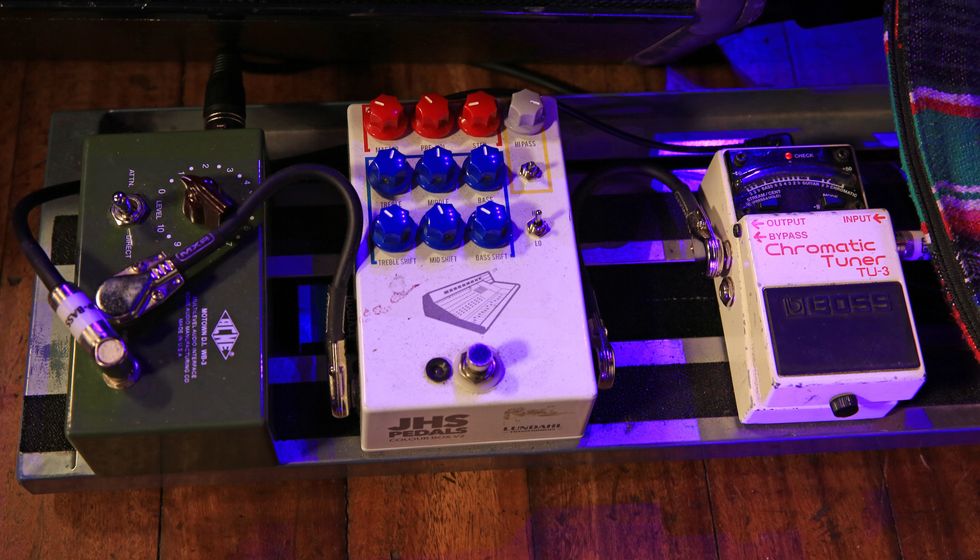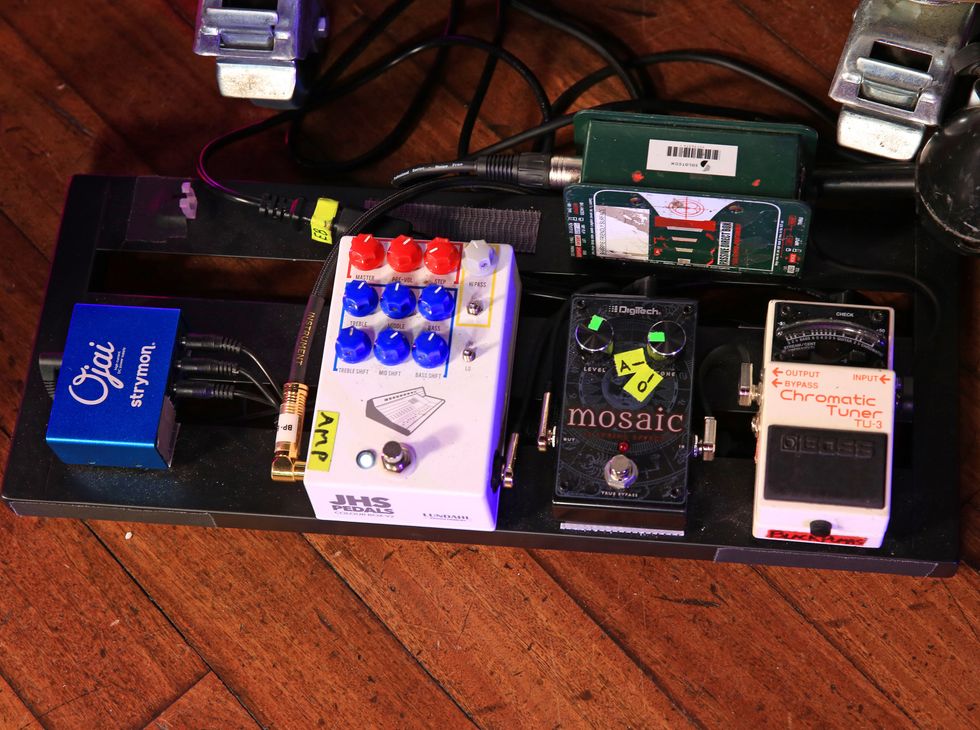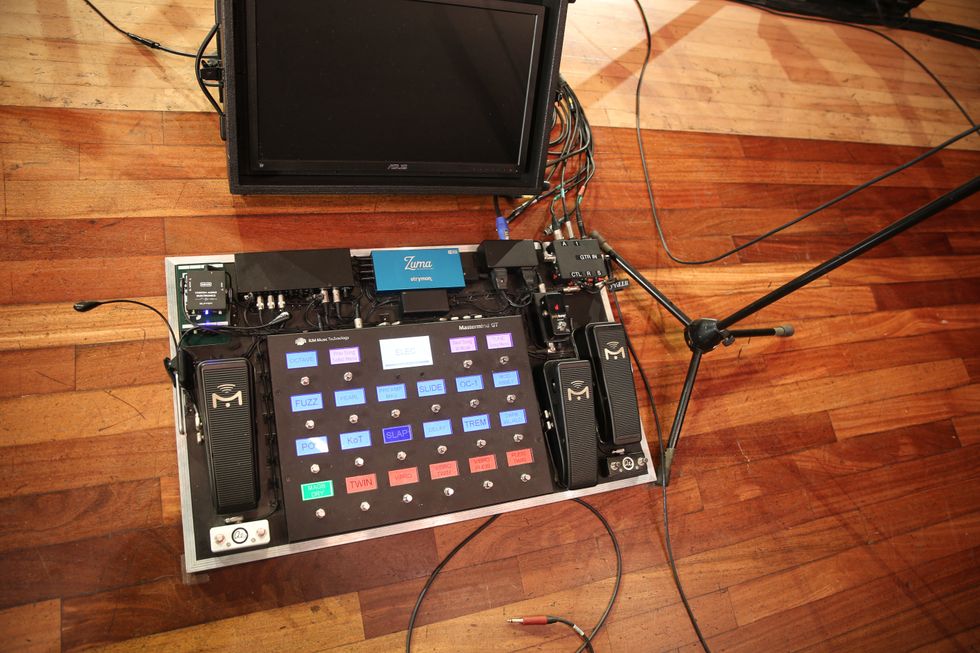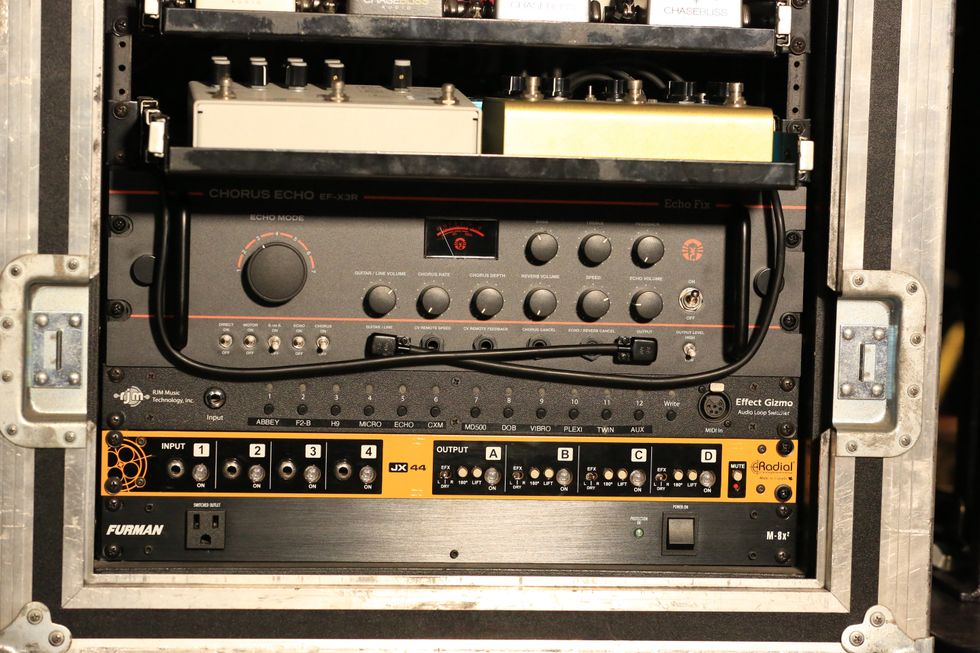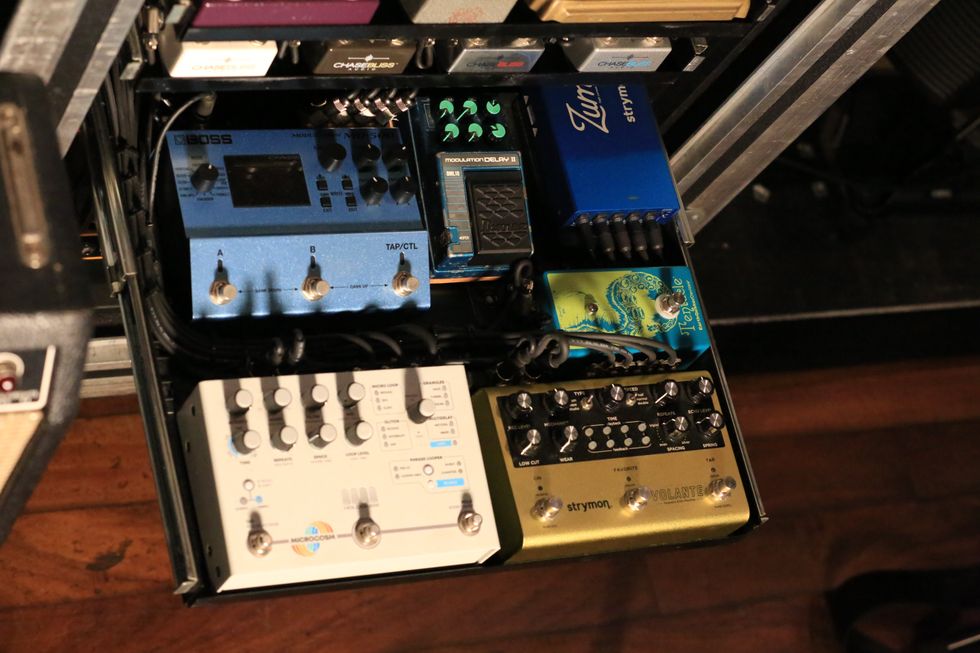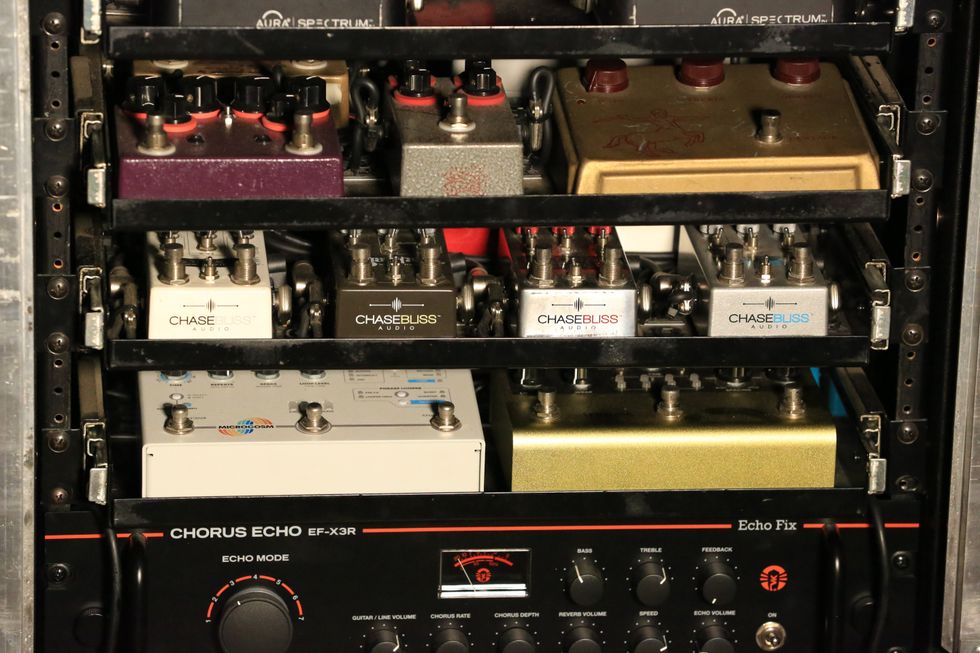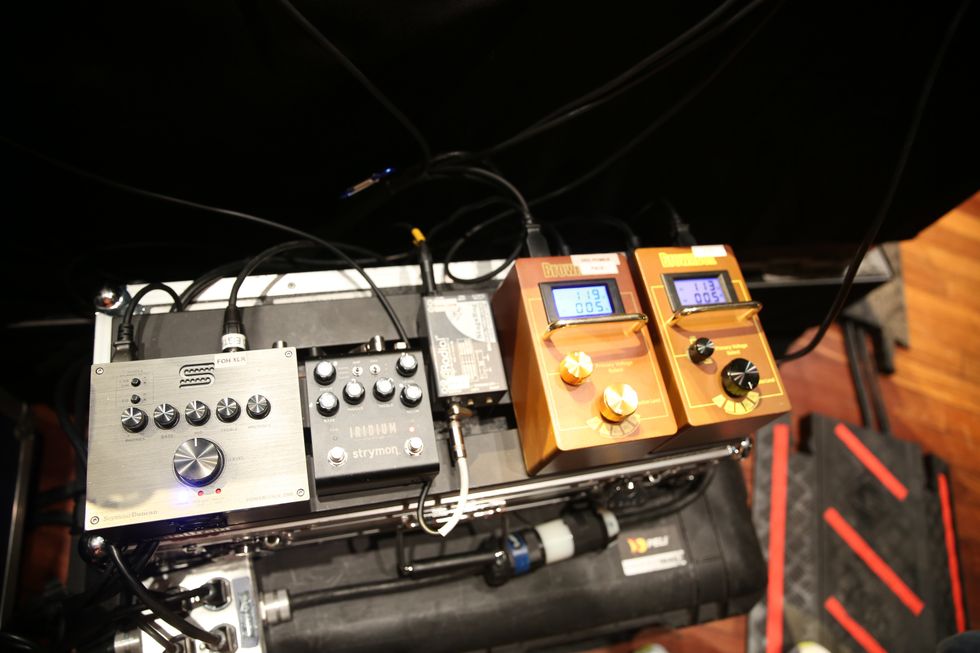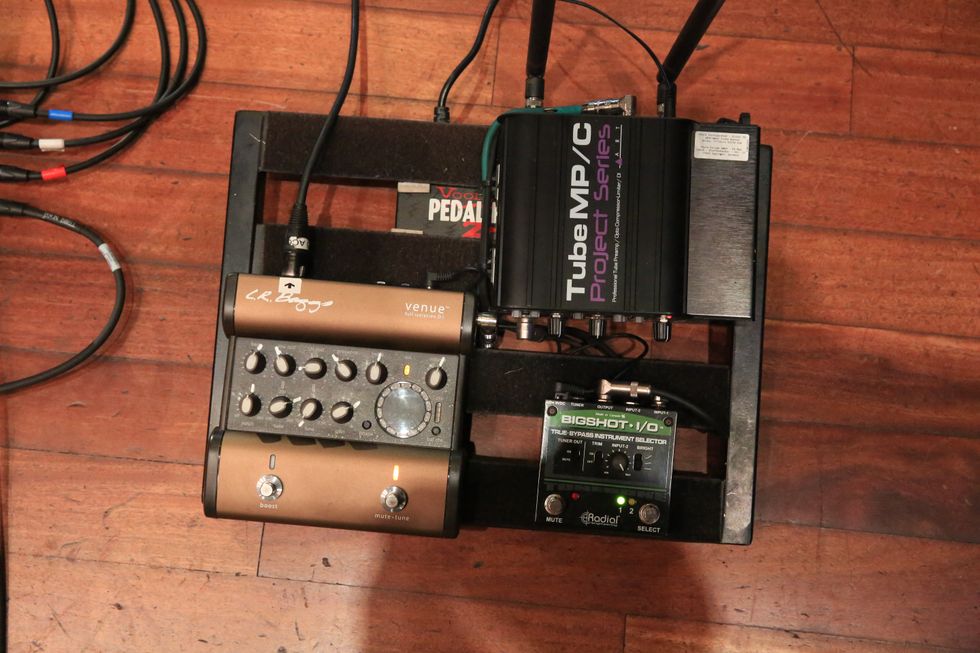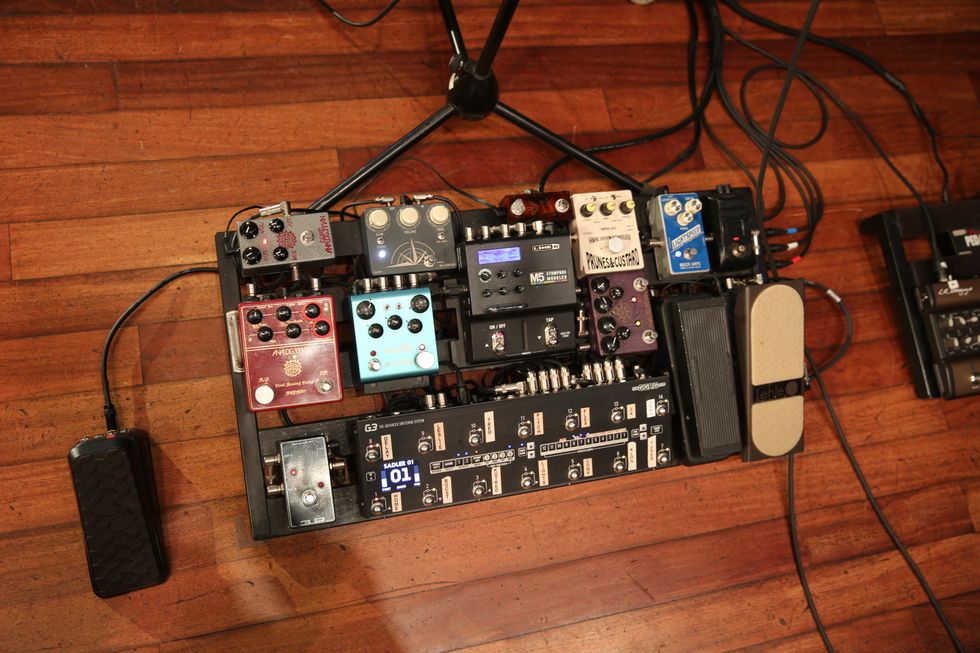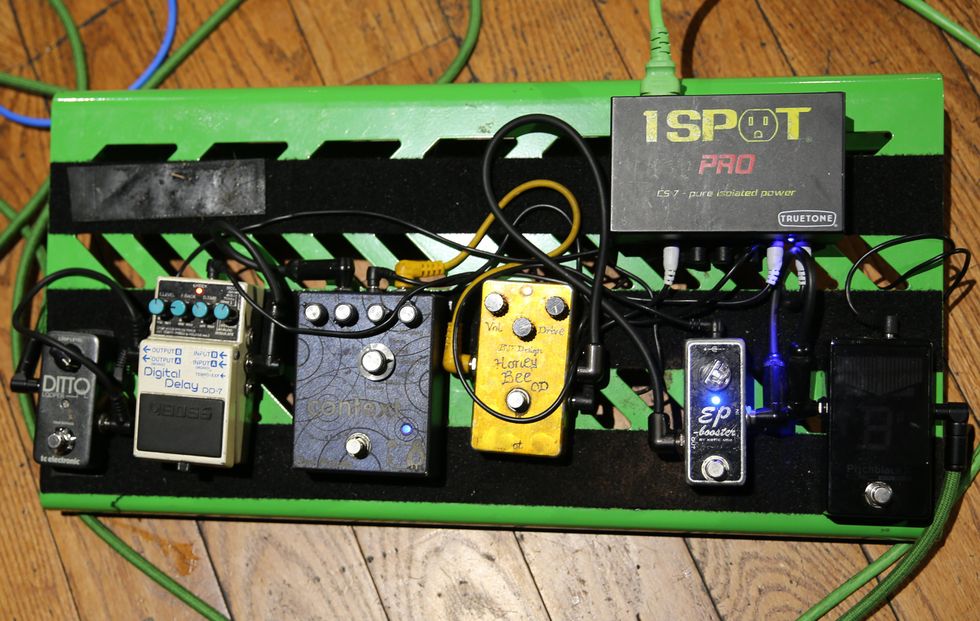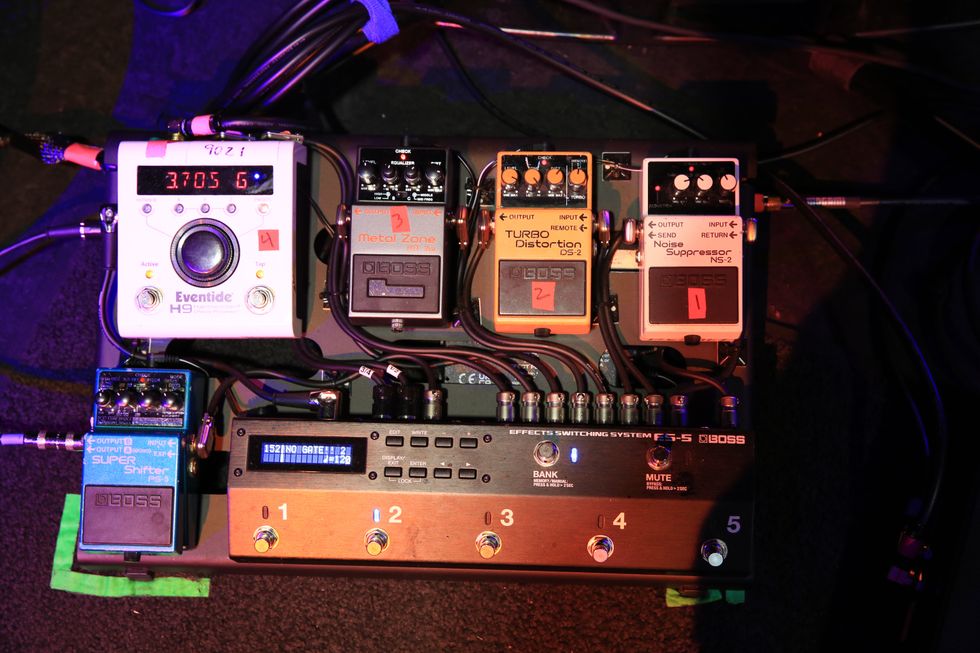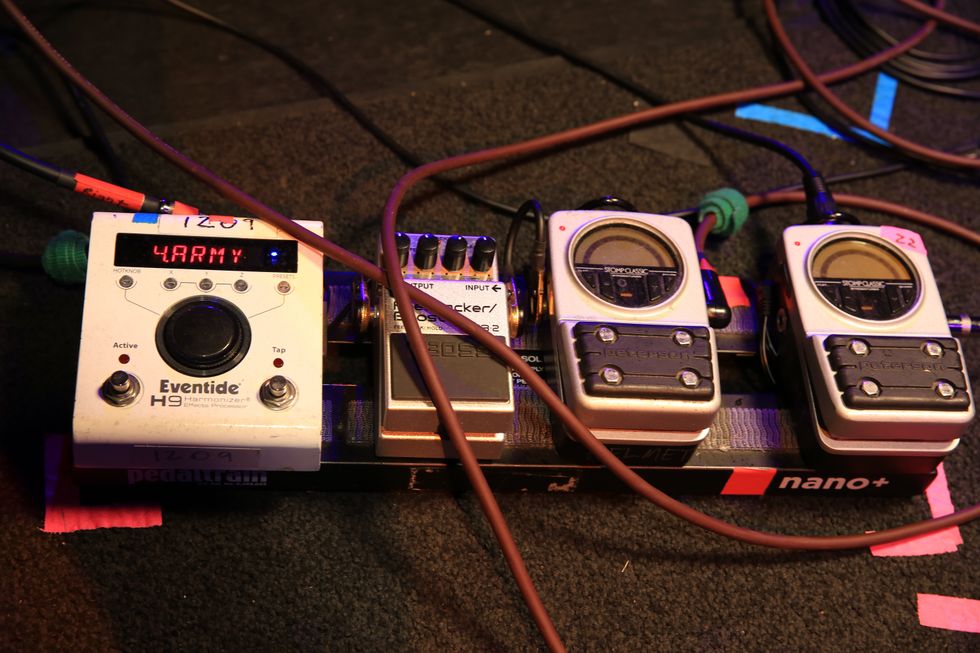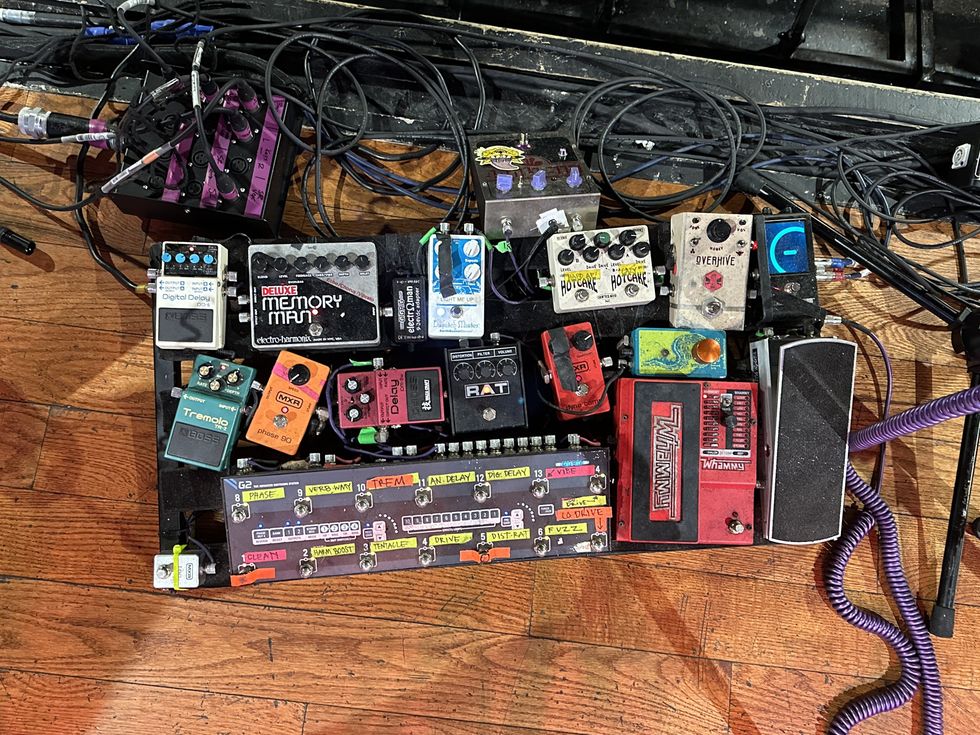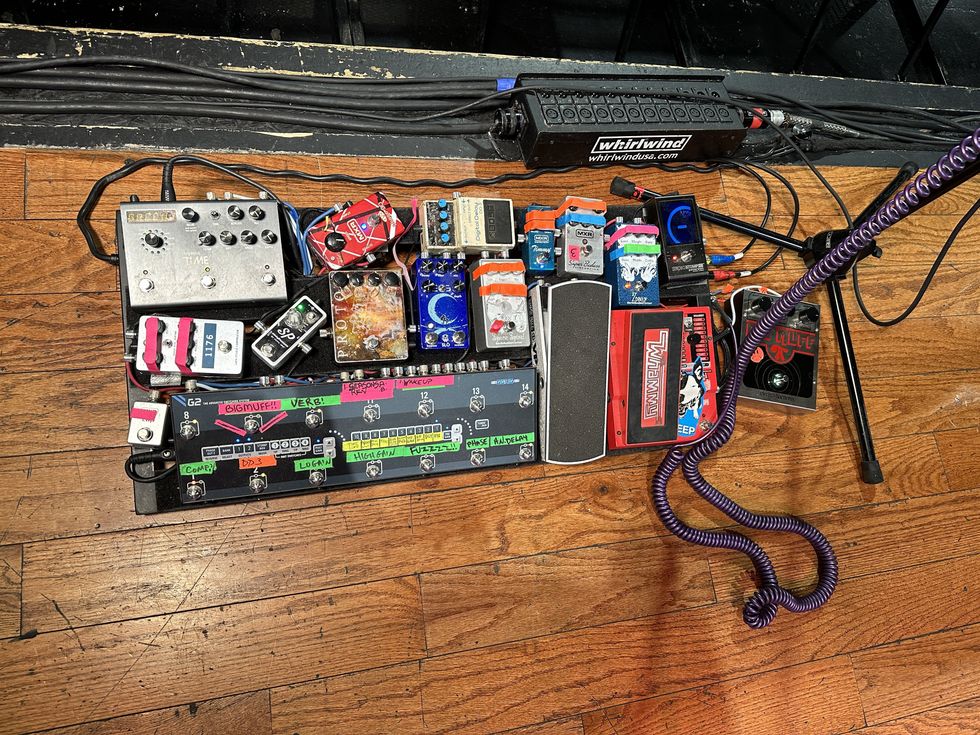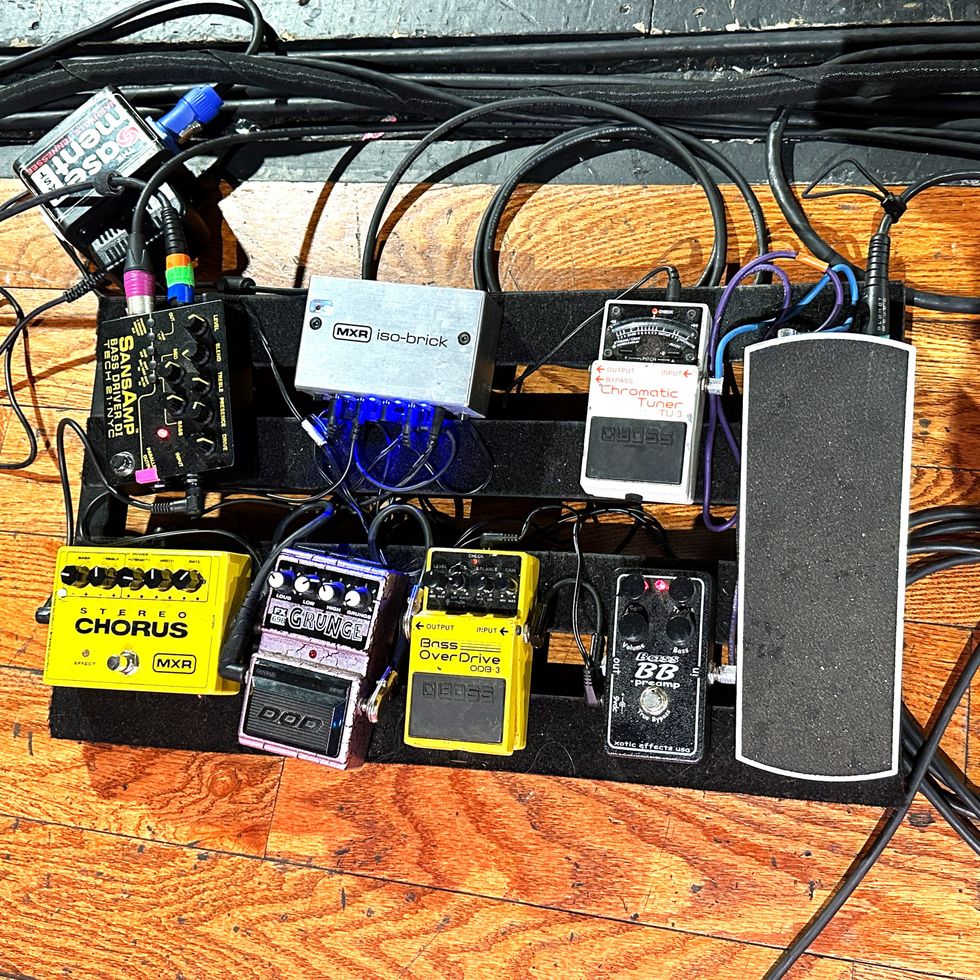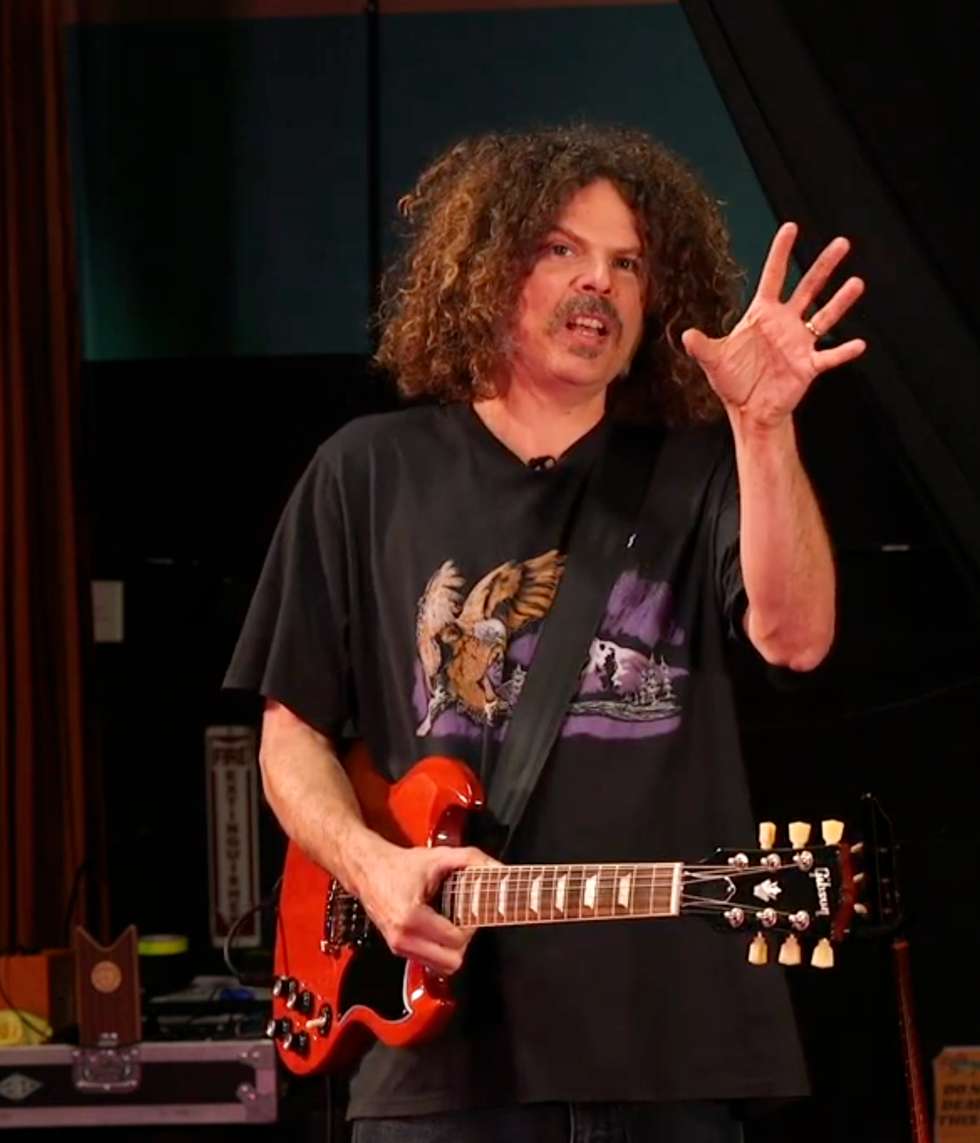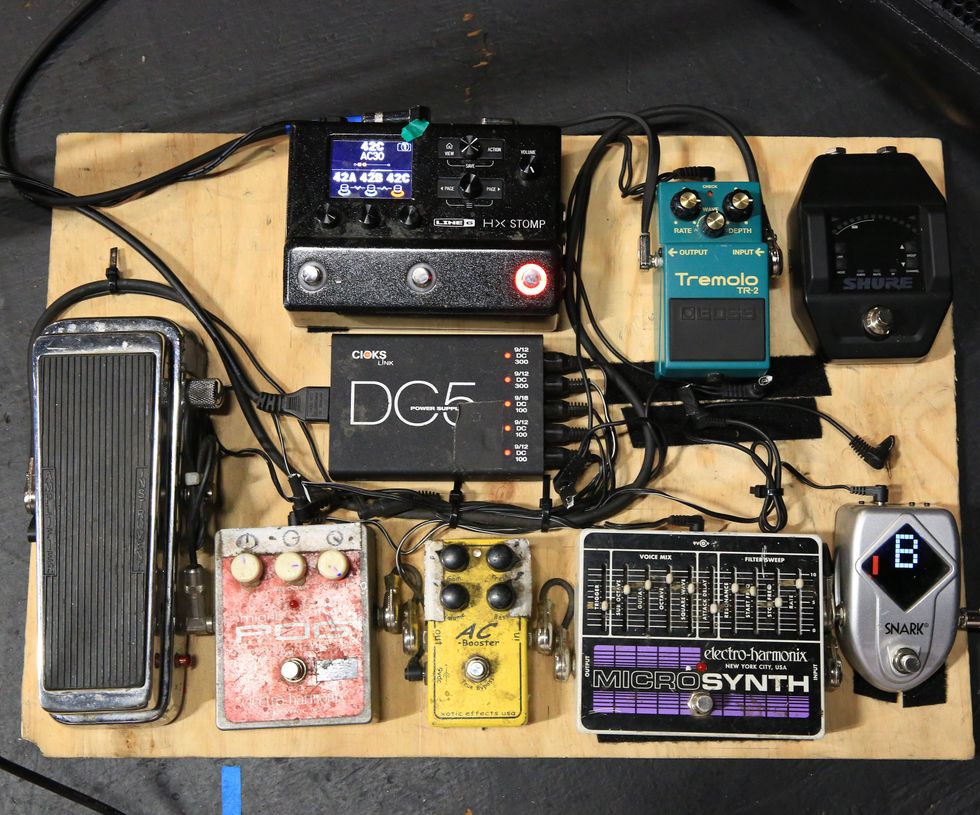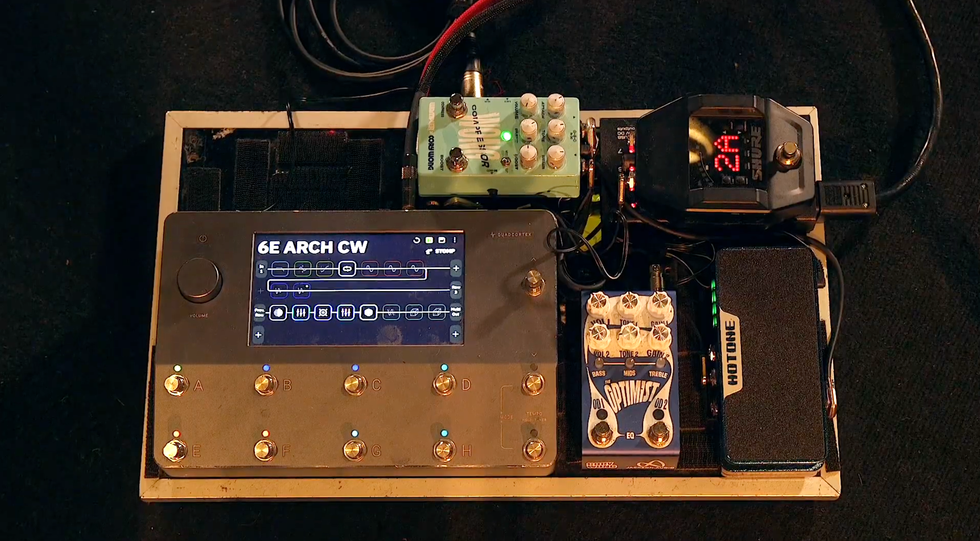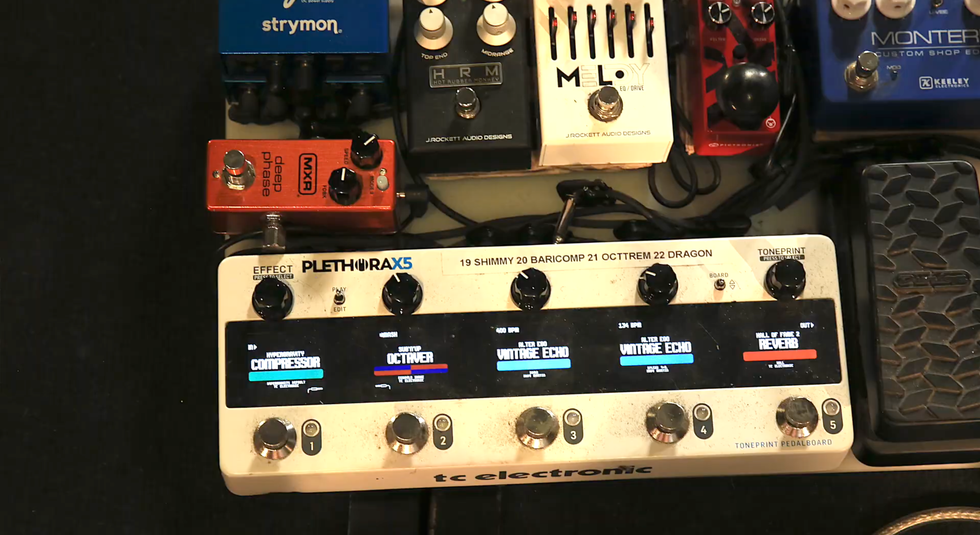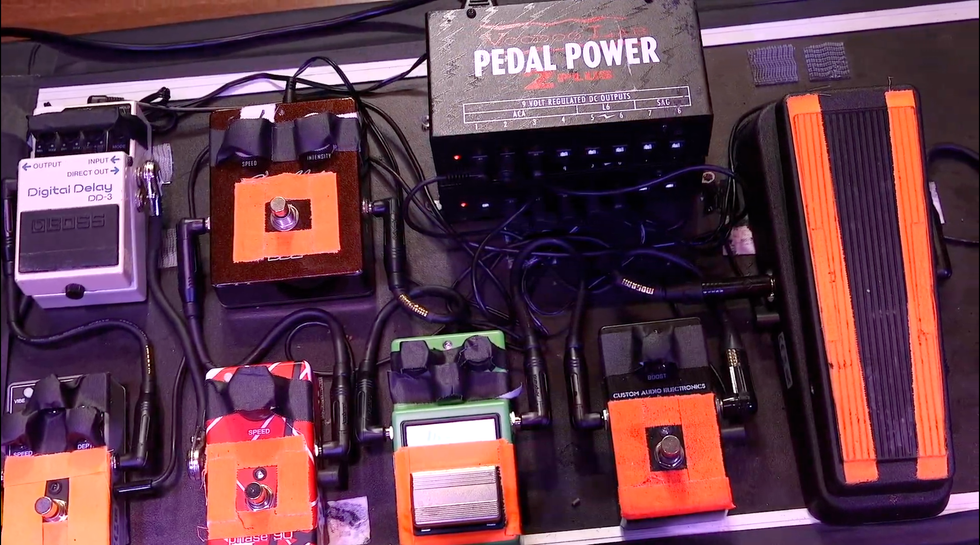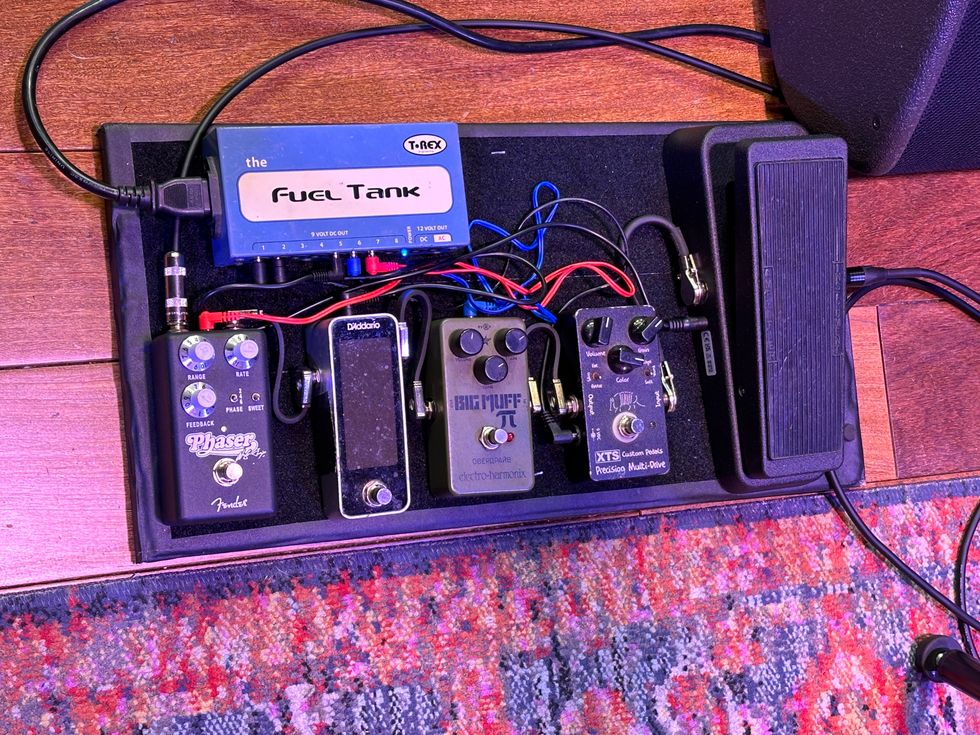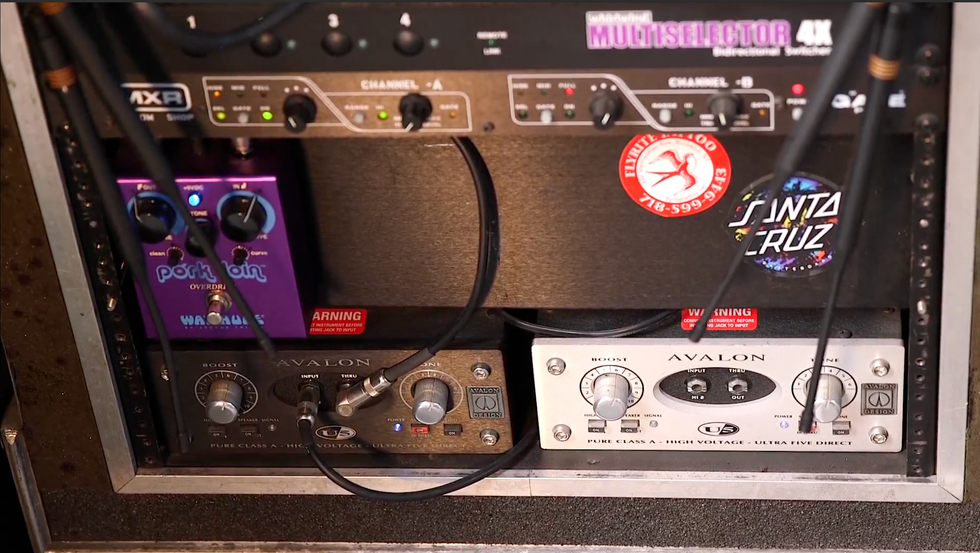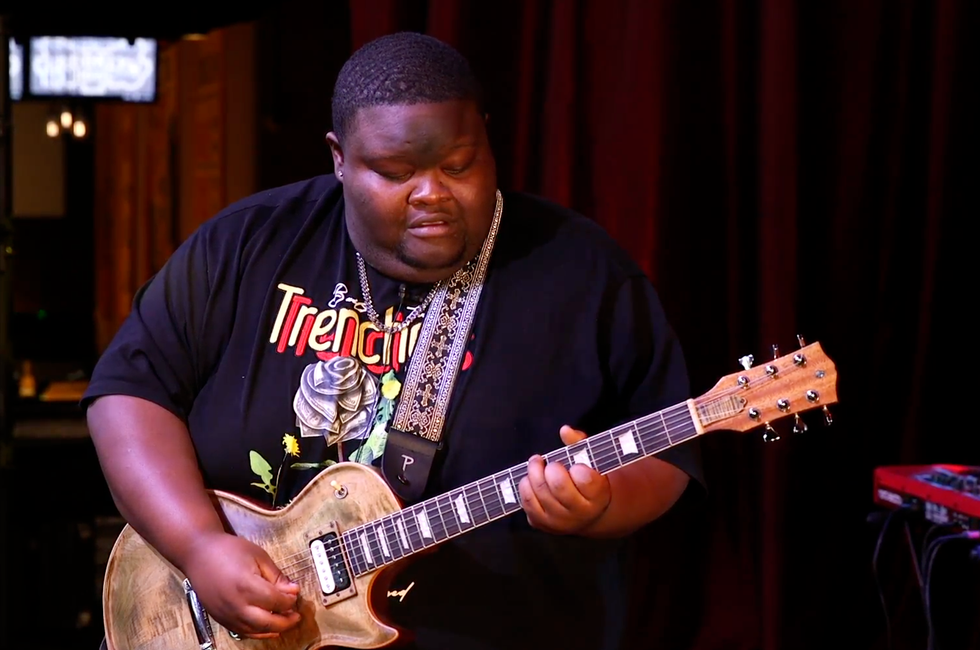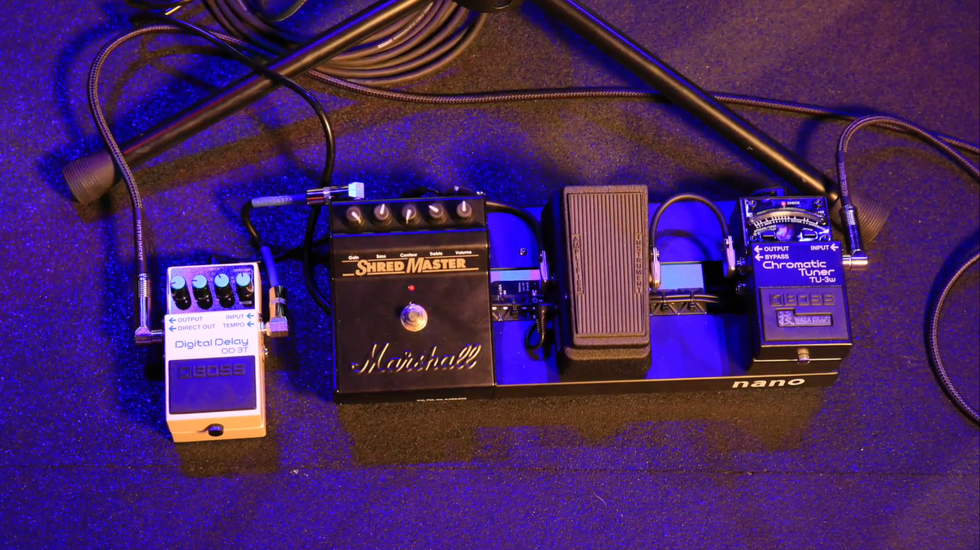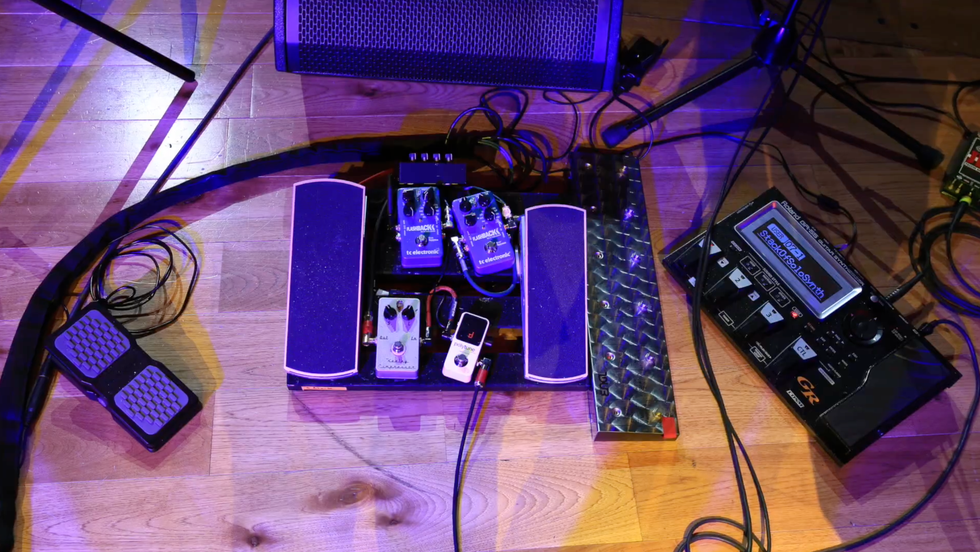Chops: Beginner
Theory: Beginner
Lesson Overview:
• Learn how to bend strings throughout a specific scale.
• Play double-stops that involve both half-step and whole-step bends.
• Construct inversions of G7 and C7 chords that include bends.
Click here to download MP3s and a printable PDF of this lesson's notation.
String bending: It's an elusive technique. Usually used in blues, rock, and country, bent notes can create a whole new sound for electric guitar. In country, bends are often used to enhance single-note lines and create crying double-stops. What many guitarists aren't able to do, however, is imply the harmony of each chord with a string bend.
In this lesson, I'll demonstrate how to work through a scale, in this case G Mixolydian (G–A–B–C–D–E–F). For each double-stop, you'll bend one note on the 2nd string, using either a half-step or a whole-step move, and you'll play the top note on the 1st string.
Technique is very important for these bends. I use hybrid picking. I'll hit the notes on the 2nd string with my pick and pluck the notes on the 1st string with my middle finger. When bending, it's important to attack the note directly. If you hesitate when you approach a note, it will sound more like blues or rock, rather than country. Remember that pedal steel players bend notes in one motion (their foot goes directly to the floor when hammering the foot pedal). Try to embrace that technique by bending directly to the note and holding it there.
Imagine you are playing a scale in thirds. Our first dyad, shown in Fig. 1, will be E and G. Instead of fretting the E, we'll bend from D up a whole-step to E. Make sure that you are bending all the way up to E and that it's in tune. Bend D up to E and then play G.
We'll use this same principle for every dyad within the scale. In Fig. 2, we use this idea to move up through the G Mixolydian scale on the top two strings. Note that some of these bends will be half-steps.
Once you've worked through a scale, you can then focus on the specific bends that create a G chord. Releasing a bend from E to D while fretting the G on the 1st string implies an inversion of the G chord. In Fig. 3, we move this up the neck with a G7 sound (using a b7-root bend) and finish with a bend from the 2nd degree (A) to the 3rd (B) against the sound of the root.
Once you've worked through the inversions, you can use these same inversions to suggest other chords. I took the same idea and transposed it to C Mixolydian (C–D–E–F–G–A–Bb) in Fig. 4.
Finally, in Fig. 5, we combine our implied inversions through both G and C chords—this is a great technique to use when accompanying a vocalist.
By using string bends, you'll be able to play through an entire scale and imply the appropriate harmony, and you'll be able to imply chords (or mini chords, as I like to call them). Remember to practice your bends in tune and with a metronome. Something that helped me was to plug my tuner into the bypass output. Most tuners are equipped with one. Basically, what this does is give you a way to visually see if you are in tune while maintaining your signal into your amp. Then, try to bend in tune without looking at the tuner. When you think it's correct, check your tuner. I've spent countless hours working to improve my bends, so if you don't get it right away, don't get discouraged—it takes time.
Strength is also a factor. To achieve whole-step bends on the 3rd fret of the 2nd string while fretting the G on the 1st string isn't easy! Don't only use your ring finger to bend. Let your index and middle finger help the bend by keeping them on the 2nd string too. Sometimes it's helpful to hold a bend for as long as you can. Definitely not easy on your hand, but there's only one way to build strength and that's through consistent practice.
Happy bending!

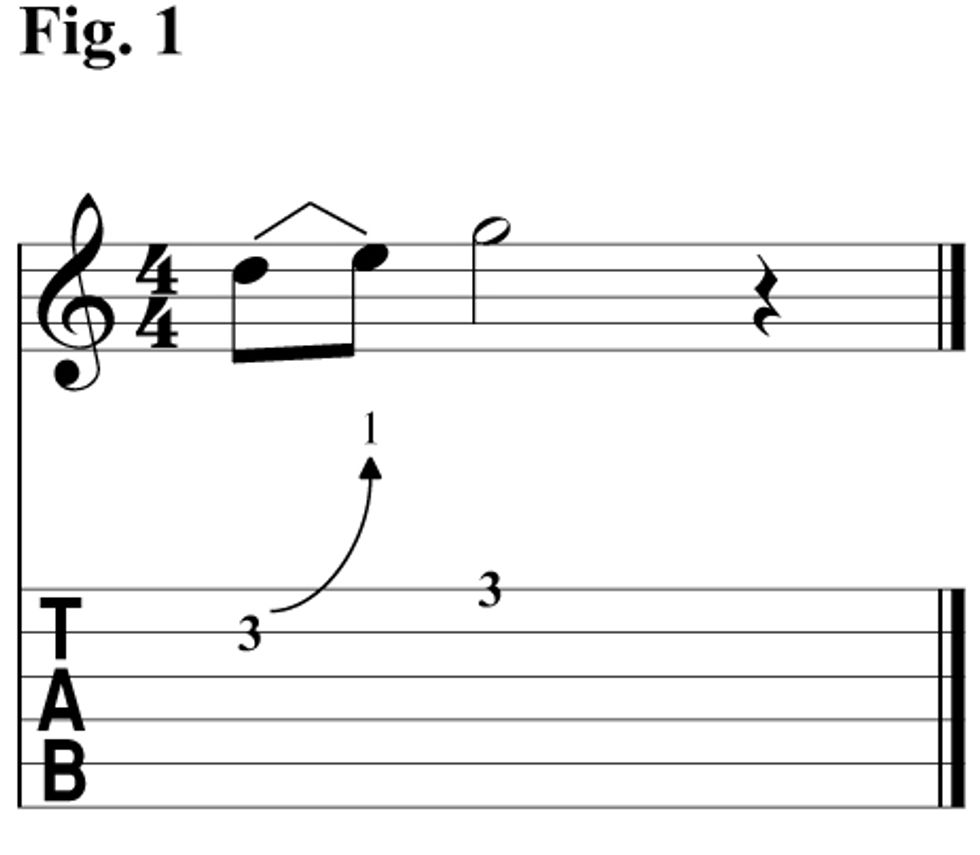

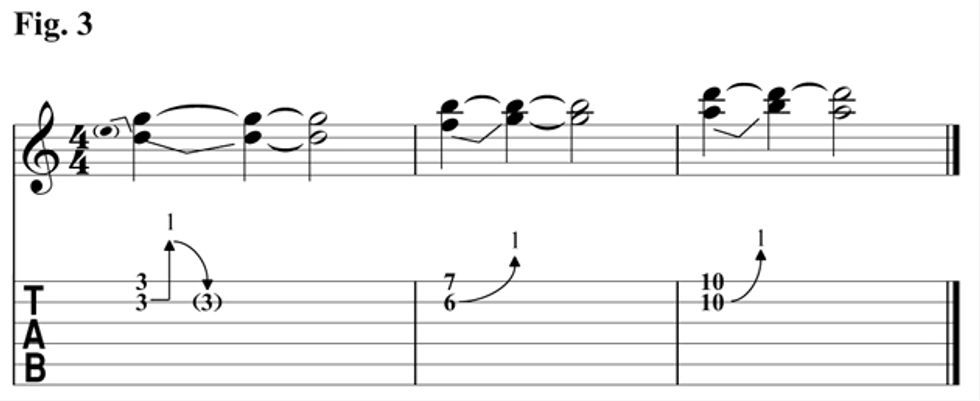
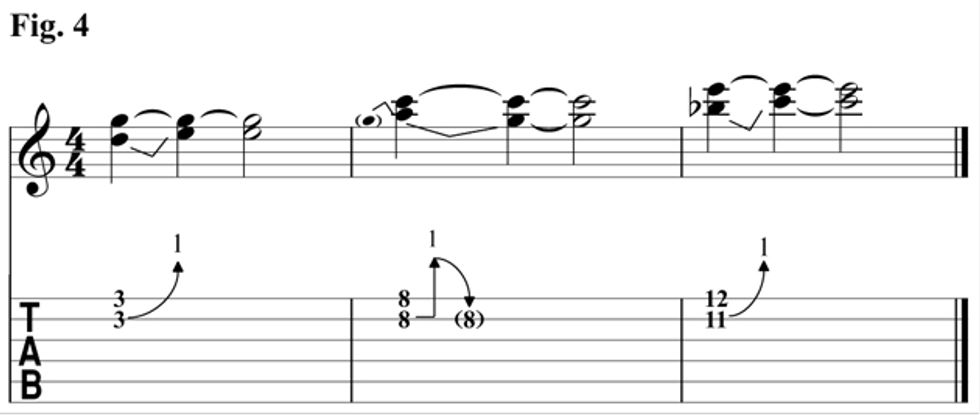



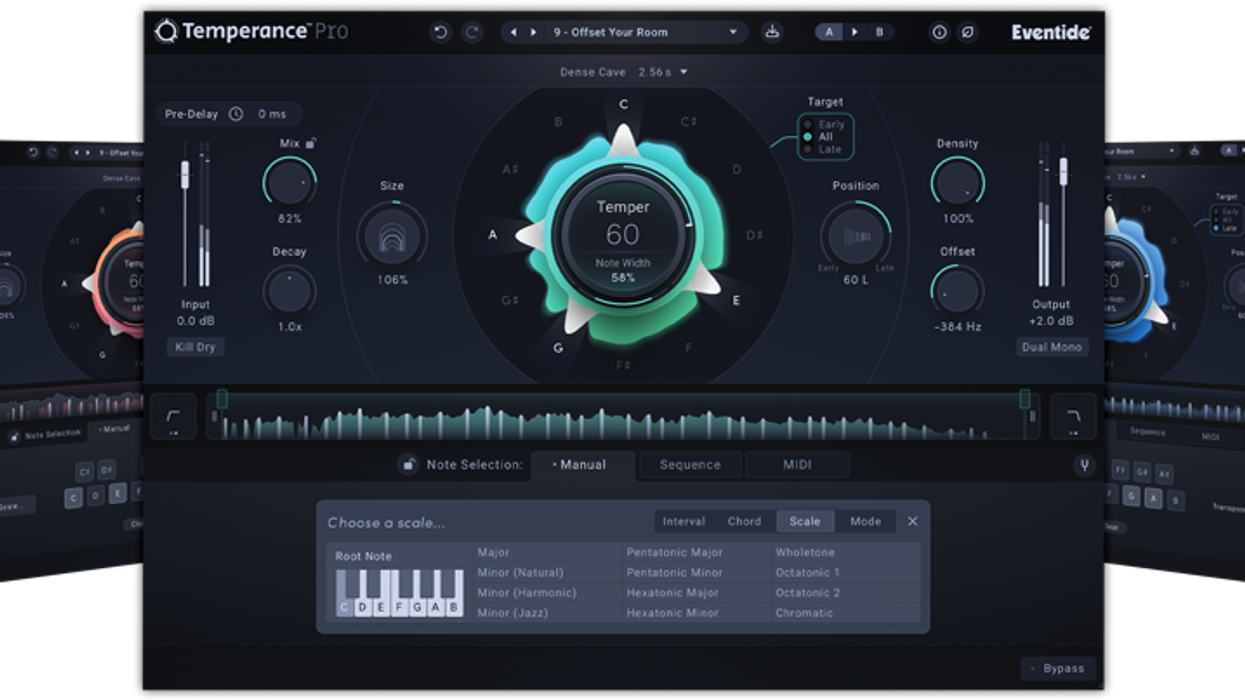




![Devon Eisenbarger [Katy Perry] Rig Rundown](https://www.premierguitar.com/media-library/youtube.jpg?id=61774583&width=1245&height=700&quality=70&coordinates=0%2C0%2C0%2C0)


